


The National Development and Reform Commission recently issued guidelines on cultivating and developing modern metropolitan areas, with the aim of building mature modern metropolitan areas with international influence by 2035. In order to further understand the relevant theories and concepts of “metropolitan area”, and explore the technology and methods of metropolitan planning practice, the Shanghai Metropolitan Planning Research Center specially invited the domestic planning leader Professor Cui Gonghao to explain the issues of the metropolitan area in the form of an exclusive interview.

Q: With the progress of globalization, what is the significance of the concept of “metropolitan area” for current and future world trends and national development?
A: Metropolitan area is actually a form of urban area.
We try to understand the formation process of urban areas from two perspectives. Firstly, from the perspective of the city itself, as a carrier of crowd activities, the city gradually expands naturally as the population gathers and functions increase. Therefore, the process from point to surface is the process of development of the city itself; Secondly, from the perspective of national requirements and social responsibilities, cities have evolved from a subordinate position in social development to a dominant position. The government has many requirements for urban development, such as how to represent China in the international competition or how to make use of the radiation ability of cities to improve the development of small and medium-sized cities.
The following figure shows the proportion distribution of cities and urban agglomerations with a population of 500,000 and above in 2018.
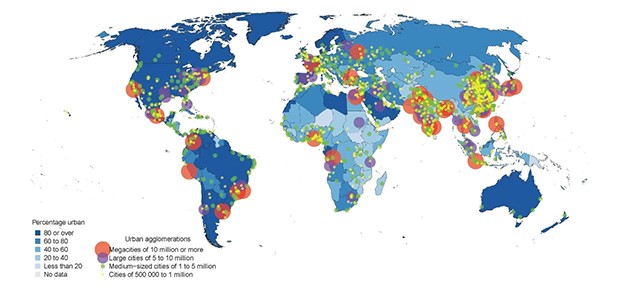
I regard the development of urban areas as an internal and external development process. The city has developed from a single point to a surface, from urban areas with suburban areas to metropolitan areas, and finally metropolitan belts. This is actually a process of the gradual development of urban functions and roles. Therefore, a large number of metropolitan areas have appeared, which is the requirement of social development.
On the other hand, with the accelerating globalization, the global era is an era of competition. The urban competition is not the competition between two single city, but also between the cities with their surrounding area. So, the urban areas are the basic spatial units of urban competition which I have mentioned in 1990s.
When did the metropolitan planning first start? In 1990, I first proposed that Nanjing should prepare a metropolitan area plan. This was the first plan in China to use the name of “metropolitan area”. From 2000, Jiangsu Province began to compile plans for the urban system including the Nanjing Metropolitan Area, the Suzhou-Wuxi-Changzhou Metropolitan Area, and the Xuzhou Metropolitan Area. In 2019, the National Development and Reform Commission issued the "Guiding Opinions on Cultivating and Developing Modern Metropolitan Areas".
The following figure shows the Suzhou-Wuxi-Changzhou metropolitan area in 2002.
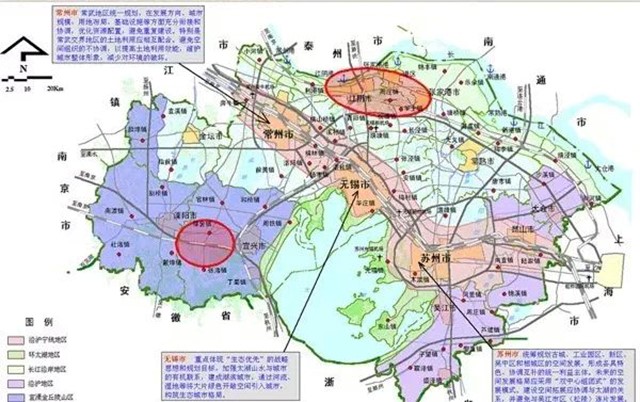
In 2019, the “Central Finance and Economics Work Conference” proposed that advantageous resources should be concentrated in central cities and urban agglomerations which lead to great changes for the spatial structure of economic development. Central cities and urban agglomerations are becoming the main carriers of various economic factors. After the guidance of the metropolitan area was proposed, a spatial series of central cities including three levels (central city, metropolitan area, and urban agglomeration) was formed.
Conceptually, the United States first proposed the metropolitan statistical area as a unit of demographic statistics. the concepts of cities and villages are equivalent to the metropolitan areas and non-metropolitan areas in the United States. The term “metropolitan area” was proposed by Japan. In the 1950s, Kiuchi Shinzo first proposed the three-zone theory of urban space. The center, periphery, and hinterland constitute the structure of the metropolitan area. Nobuo Takahashi proposed the three major metropolitan areas in Japan (Figure 3).
Recently, the metropolitan area was mentioned in the urban planning spatial layout in the "14th Five-Year Plan". Therefore, in my opinion, the concept of metropolitan area has been listed in the national planning at all levels. Metropolitan areas and modern metropolitan areas have been proposed in the planning which is significant in both national economic development and international competition.
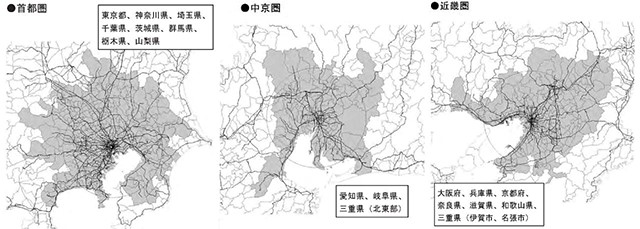
Q: In the past two decades, cities such as Shanghai, Nanjing, Wuhan, Nanchang, Chongqing, and Fuzhou have successively carried out the planning and construction of metropolitan areas, with different emphases in each metropolitan area. So, what do you think are the core goals of the current metropolitan planning work, and what issues need to be addressed?
A: I summarized the core goals of metropolitan planning into three aspects.
The first goal is to represent the country to participate in international competition; the second goal is to achieve common prosperity in the region, namely improving economy of small and medium-sized cities by large cities, and gradually to narrow differences and achieve common prosperity; the third goal is that the city's responsibility is to drive regional development, that is, intra-city development.
What is the main issue for metropolitan planning work? Firstly, it should clarify the positioning and functional system of the metropolitan area. Metropolitan area is composed of central cities and adjacent areas and cities. In order to achieve the competitiveness and common development, we must give full play to the advantages of the entire area. For example, in the Shanghai metropolitan area, according to the characteristics of each city, the government should give full play to the greatest advantages by performing their respective responsibilities to form a unified functional system.
The following figure shows the integration of the spatial structure of the overall planning of the cities in the Shanghai metropolitan area

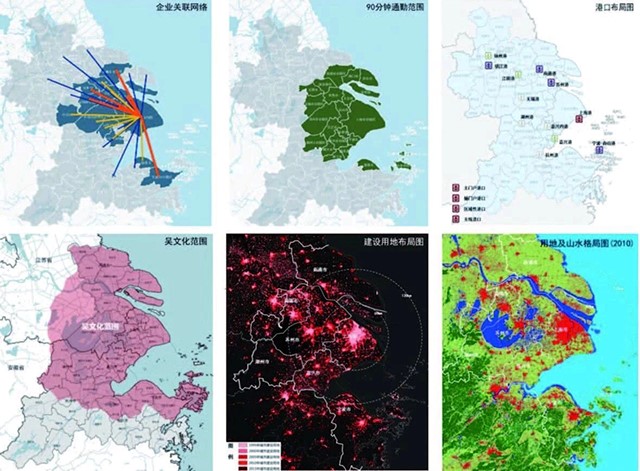
There are three aspects for difference. The first should be mentioned is the difference in the development of core cities. The development of core cities is relatively weak when they are not large in scale, weak in economic strength, and weak in economic connections. The second is the difference in the level of development, that is, the level of regional economic development is different. The third is the difference in economic ties. Several cities are in strong connection, while others are lack of connection with other cities.
Q: Nanjing is one of the first cities to carry out the planning and construction of the metropolitan area. Recently, the National Development and Reform Commission also approved the "Nanjing Metropolitan Area Development Plan". Regarding the construction work and results of the Nanjing Metropolitan Area in recent years, can you share some good experiences or work experiences?
A:First of all, I must explain that I did not participate in the "Nanjing Metropolitan Area Development Plan". What I am introducing is the understanding and practices of coordinated development in the implementation of the original Nanjing Metropolitan Area Planning. The book 《Transformation and Coordination: Practical Exploration of Urban-Rural Space Coordination Planning in Nanjing Metropolitan Area》 has summarized many work of “Nanjing Metropolitan Area”.
The participants involved in the construction of the Nanjing Metropolitan Area have a strong principle of regional cooperation and coordination, because Nanjing is city of long history. When China government puts forward the requirements for coordinated regional development, Nanjing proposed the regional concept of 18 cities. The 18 prefecture and municipal economic cooperation joint meetings are chaired by a mayor in turn every year. Many changes have taken place in this area, but the cities along the Yangtze River are the main ones. The proposal of the metropolitan area, centered on Nanjing, included the one-hour radiation circle, including Ma'anshan, Wuhu, and Tongling in the south, Chuzhou in the north, and Zhenjiang in the east. Nanjing is the provincial capital city on the edge of the provincial boundary. Although it is the capital of Jiangsu Province, it is close to Anhui Province. Also, the eastern part of Jiangsu Province is more affected by Shanghai. Therefore, Nanjing should pay more attention to inter-provincial regional coordination and regional development.
The following figure shows the Nanjing Metropolitan Area delineated by Jiangsu Province in 2002.
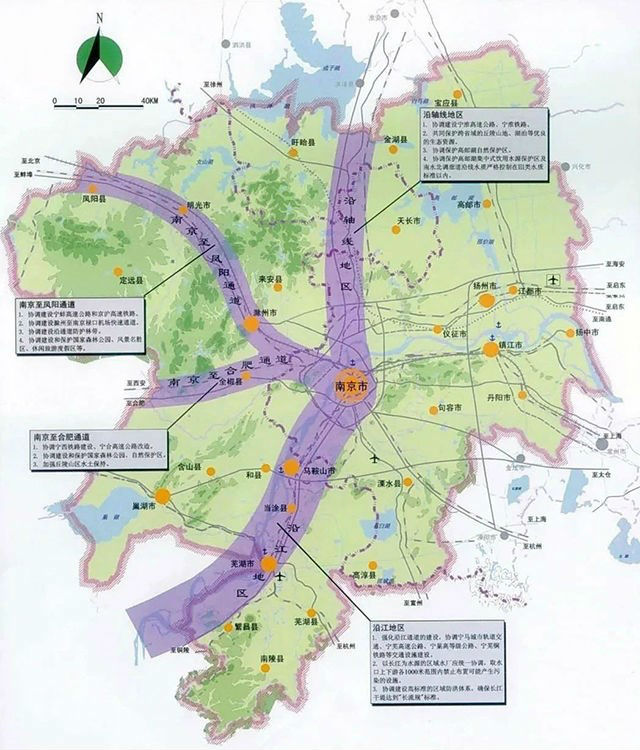
Q: Currently, the compilation of the spatial collaborative planning of the Shanghai metropolitan area is in progress, involving 9 cities including Shanghai, Wuxi, Changzhou, Suzhou, Nantong, Ningbo, Huzhou, Jiaxing, and Zhoushan. So, how do you evaluate the “Shanghai Metropolitan Area” with such a "1+8" combination? What is the significance or impact on different levels such as the integrated development of the Yangtze River Delta, the establishment of a new domestic dual-cycle pattern, and the international development situation?
A:We mainly paid attention to 15 cities when studying the Yangtze River Delta in the past. These 15 cities are the core of Yangtze River Delta, which are the regions with the closest geographical, blood, cultural, functional, economic, and social connections. Later, it expanded into three provinces and one city, called the Pan-Yangtze River Delta, and the concept of the Yangtze River Delta was generalized.
The “1+8” city mode in the Shanghai metropolitan area, in my opinion, are actually the core of the core, which can help Shanghai become a dual-cycle hub. Whether it is internal or external circulation, or whether it is opening to the outside world, technological innovation, industrial bases, cultural creativity, etc., the key mode is in these 9 cities. The construction of the Shanghai metropolitan area is a measure for Shanghai to become an international city and to make Shanghai an international metropolis more quickly. Because of the international competition, it is necessary to gather energy, economy, culture, creativity and technology together. The "1+8" city mode in the Shanghai metropolitan area is a high-density area reflecting the agglomeration effect. It is the core of the Yangtze River Delta, the best area for dual cycles, and the leader in internationalization.
The following figure shows the scope of "1+8" city mode of Shanghai Metropolitan Area.

Q: Is it possible to talk about some opinions of the development of the metropolitan area in the future, or the expectations for the planning and construction of the metropolitan area in Shanghai?
A: I am very supportive of the establishment of the "Shanghai Metropolitan Area Planning Research Center". In the practice of urban planning, no other countries in the world have so many planning types as Chins. With so many planning results, planning participants, but we have rarely created our own theories. Metropolitan area is an important space type, why can't be created to be an original theory? Nowadays, China’s urbanization has exceeded 60%, so I strongly support the establishment of this metropolitan planning research center in Shanghai.
The following figure shows the establishment of Shanghai Metropolitan Area Planning and Research Center on September 28, 2020.
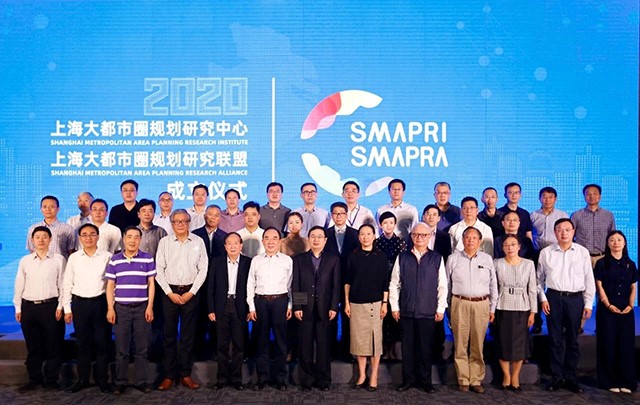
Firstly, it is necessary to create the theory of metropolitan area. The condition of Shanghai is sufficient for creating China's metropolitan area theory.
Secondly, it is necessary to tell the story of the Chinese metropolitan area well, especially the story of Shanghai metropolitan area. The Shanghai metropolitan area should be established as model for the Chinese metropolitan area.
Thirdly, we should know how to develop the Shanghai metropolitan area next? As an outstanding metropolis in the world, Shanghai should have a larger vision of development and expansion strategy. In addition, we also should explore that how Shanghai can promote the development of the Yangtze River Delta. This issue is very important.
Finally, training courses on metropolitan planning should be hold. Only when everyone does this can a consensus be formed. We can fully discuss what is a metropolitan area and how to make a metropolitan area in a training class. This theory can further promote the planning of metropolitan areas.
I sum up the four points above as "a theory, a story, a strategy, and a group of talents." Don't stop at the completion of the planning of the Shanghai metropolitan area. We must do everything in detail, and there are still many plans that have not been implemented. At the same time, we also need to look further. We should create our own theories, formulate several norms, put forward relevant examples, and cultivate a group of talents. This is my hope and my request to you.
Translated by Wang Miao